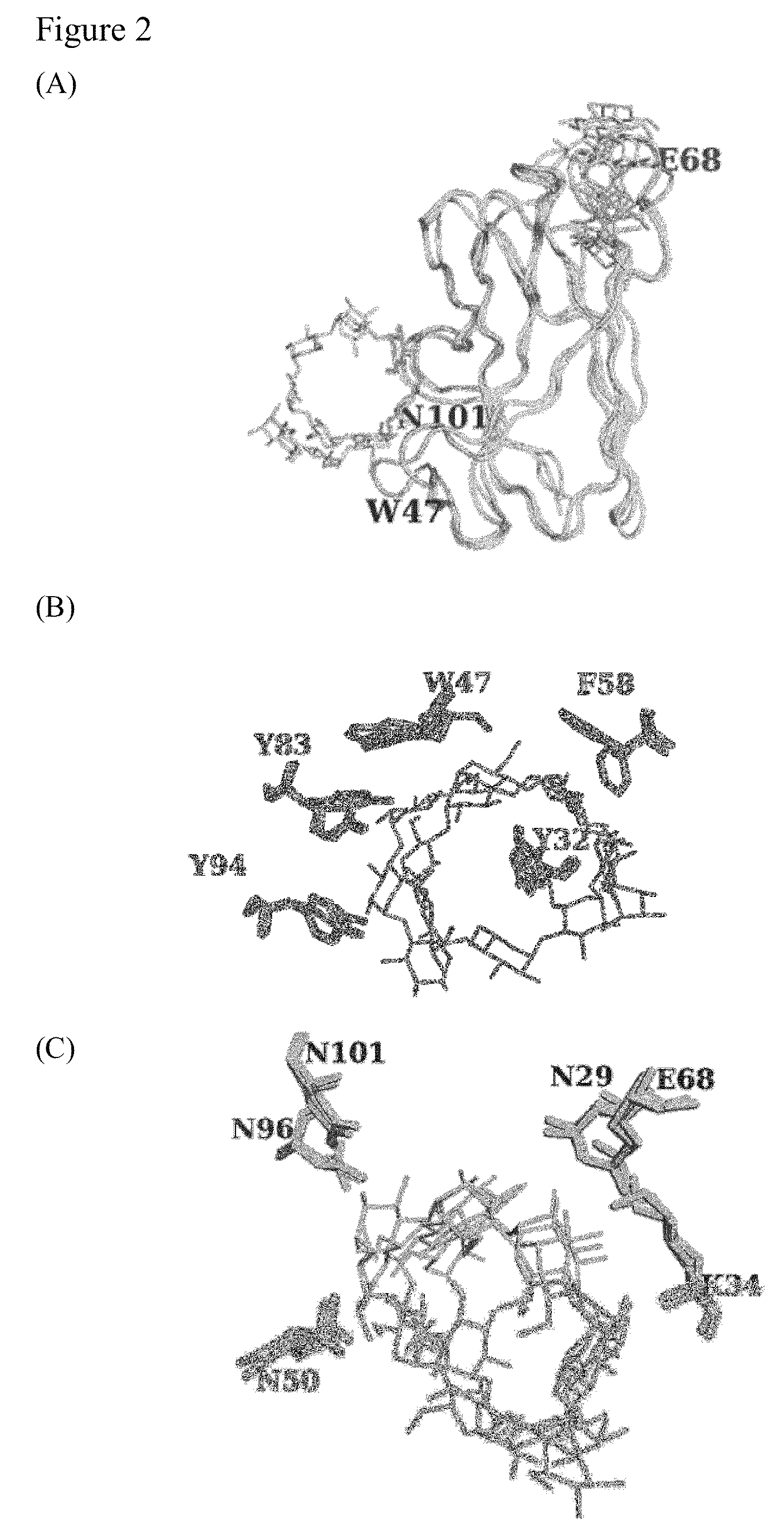Polysaccharide-protein binding model and nano-fibril formation of a starch binding domain
a polysaccharide-protein and binding domain technology, applied in the field of starch binding domain, polysaccharideprotein binding model, fibril forming peptide, etc., can solve problems such as fibril formation
- Summary
- Abstract
- Description
- Claims
- Application Information
AI Technical Summary
Benefits of technology
Problems solved by technology
Method used
Image
Examples
example 1
[0044]Protein Expression and Purification
[0045]Recombinant enzyme expression, purification, and functional assay for RoGACBM21 had been reported (W. I. Chou, T. W. Pai, S. H. Liu, B. K. Hsiung, M. D. Chang, The family 21 carbohydrate-binding module of glucoamylase from Rhizopus oyrzae consists of two sites playing distinct roles in ligand binding, Biochem. J. 396 (2006) 469-477). Briefly, the DNA fragment encoding RoGACBM21 was cloned into the pET23a(+) expression vector and overexpressed in E. coli BL21-Gold (DE3) cells (Novagen). Recombinant SBD sample was purified by His-Bind® affinity column chromatography (Novagen) using the standard protocol. The purified SBD sample was dialyzed against sodium acetate buffer (50 mM, pH 5.5). The resulting C-terminally 6× His-tagged SBD (11.65 kDa) was purified by Ni-NTA affinity chromatography with a final yield of 5 mg of purified protein per liter of cells.
[0046]Site-Directed Mutagenesis
[0047]All RoGACBM21 mutants were generated using PCR-ba...
example 2
[0086]Preparation of Recombinant SBDs
[0087]In the present invention, several wild-type and mutant SBD clones, including SBD (SEQ ID NO:1), SBD (ΔK108) (SEQ ID NO:2), SBD (K108A) (SEQ ID NO:3), SBD (K108R) (SEQ ID NO:4), SBD (K108H) (SEQ ID NO:5), and SBD (K108D) (SEQ ID NO:6) were constructed and expressed in Escherichia coli BL21 Gold (DE3) cells using pET-32a (+) as the expression vector. Protein expression and purification were carried out as described previously. Protein concentration was determined with the BCA Protein Assay Kit (Pierce) and the starch binding analysis was performed as described previously.
[0088]Circular Dichroism (CD) Spectroscopy and Thermal Stability
[0089]CD spectra and thermostabilities were recorded in a 0.1-cm cuvette using an Aviv model 202 CD Spectrometer. Data collection and calculation were carried out as previously described.
[0090]Saturation Binding Assay
[0091]To analyze the saturation binding ability, 100 μL of purified SBD (5 to 90 μM) were each mi...
PUM
| Property | Measurement | Unit |
|---|---|---|
| pH | aaaaa | aaaaa |
| temperatures | aaaaa | aaaaa |
| pH | aaaaa | aaaaa |
Abstract
Description
Claims
Application Information
 Login to View More
Login to View More - R&D
- Intellectual Property
- Life Sciences
- Materials
- Tech Scout
- Unparalleled Data Quality
- Higher Quality Content
- 60% Fewer Hallucinations
Browse by: Latest US Patents, China's latest patents, Technical Efficacy Thesaurus, Application Domain, Technology Topic, Popular Technical Reports.
© 2025 PatSnap. All rights reserved.Legal|Privacy policy|Modern Slavery Act Transparency Statement|Sitemap|About US| Contact US: help@patsnap.com



